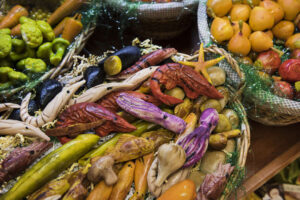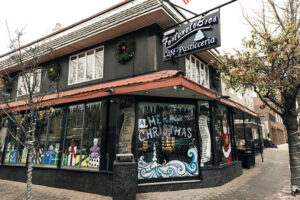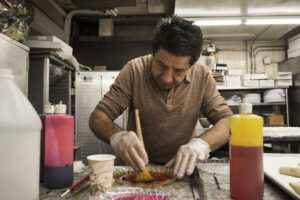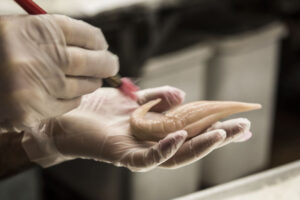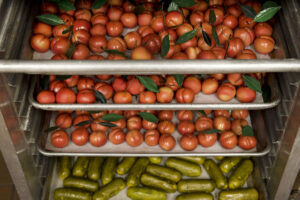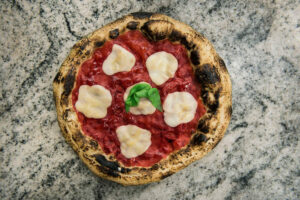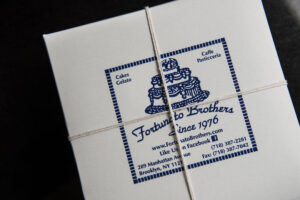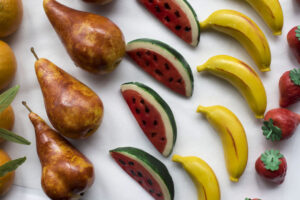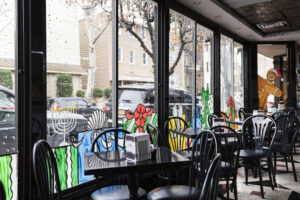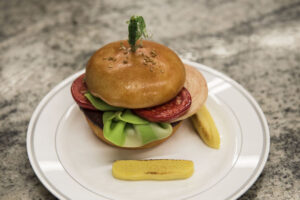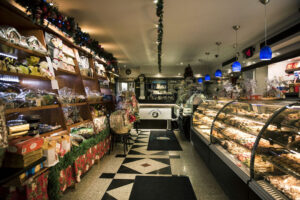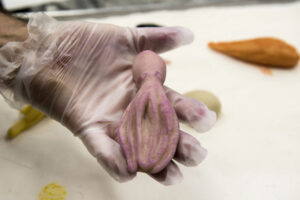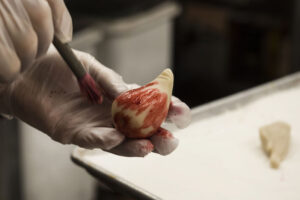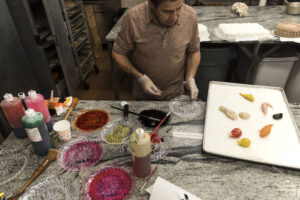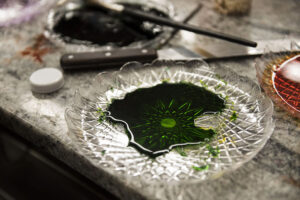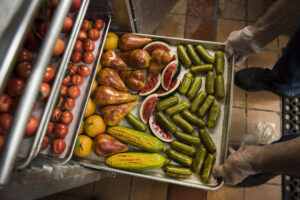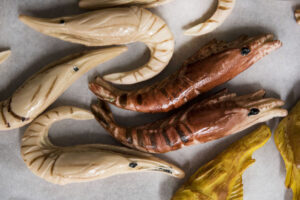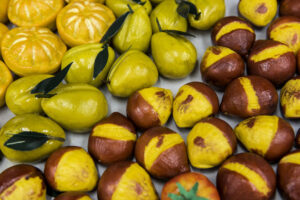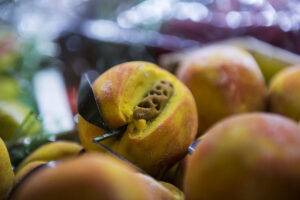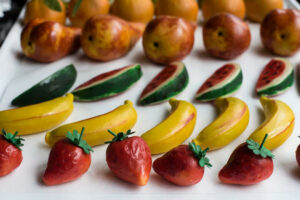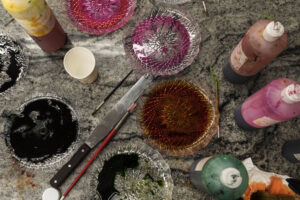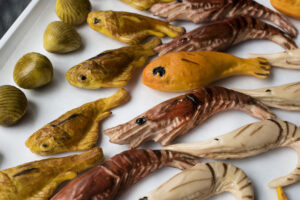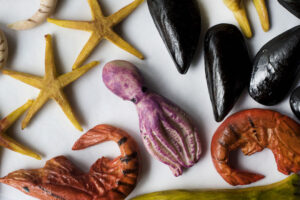
On a Tuesday morning at Fortunato Brothers in Williamsburg, men about to get their breakfast pastries and espresso slap each other on the back. “You look better and better every time I see you,” one says to another in greeting, a thick Brooklyn accent making those Bs really burst. Everyone in the place is wearing a Yankees cap and you can almost forget that there’s a Variety Coffee a few blocks away, a vegan grocer around the corner. Here, everyone talks about being “on the job”; neighborhood women order birthday cakes for husbands. You can tell they’re busy here in the spring during Communion season, piping baby-blue buttercream crosses onto vanilla cakes.
It’s Christmas season now, though. There are stacks of panettone, cellophane-wrapped platters of sprinkled struffoli, biscotti in the case and cheesecakes in the fridge. Massive rainbow cookie cakes are each topped with a smaller rainbow cookie, calling my name as well as those of small children who gaze longingly at them. The whole place is decked out for the holiday, but there’s one very special item on their menu: Feast of the Seven Fishes marzipan.
Marzipan. It’s a word everyone’s heard but many aren’t sure what it is, exactly, or whether it’s even edible. As someone who drools over rainbow cookies and inhales the sweet scent of almond extract to perk myself up, I know exactly what it is and have become a bit of an evangelist. I make it myself all the time, forcing my food processor to work itself into a frenzy grinding up almonds for paste, then combining that with powdered sugar for a sweet dough-y candy you can make into any shape you like.
At Fortunato Brothers, there are marzipan fruits (cherries, strawberries, watermelons), vegetables (eggplant, whole ears of corn), even pizzas and intricately decorated hamburgers. These are the year-long almondy offerings, which serve double duty as decor and a dessert for the true believers. But when November comes, that’s when the mostly retired Michael Fortunato returns to the kitchen to help out with the holiday rush and decorate purple squid, pink shrimp, black mussels and all the other staples of a traditional Italian Christmas Eve dinner. While the cherries and strawberries are the perennial best sellers, tradition persists.

As he works, Fortunato smiles and shrugs off most questions: To him, there’s nothing that interesting about what he’s doing, because he’s been doing it for around 50 years. The bakery itself, which opened in 1976, has been around for over 40 now and is famous for its gelato and traditional desserts. The kitchen is massive, a maze that feels endless and intoxicates with the infinite promise of sugar—one person decorates cakes here, another covers cookies in sprinkles there, buttercream churns continuously in industrial stand mixers.
There is something very special about this talent, though, as he mixes food coloring in various plates and uses paper towels to dab his paint brushes, accessing just the right color and brush effect for each figure. He molds lifelike figs by hand with ease, using the handle of a brush to make indents, creating notches to mimic leaves. If you ask him to work more slowly so that you can see more of his process, he physically can’t—his mastery and muscle memory make him move at a quick pace.

He learned the craft in Italy, in his family’s bakery after school. “You watch today, you watch tomorrow, and then you start to make,” he says, characteristically nonchalant.
As Michael finishes painting all the frutti di mare, his brother, Frank, enters to roll out the sfogliatelle. Regulars begin to stand in the kitchen door, wanting to say hello. The men in Yankees caps are still sipping their espresso. The marzipan waits for its big moment, while the every day keeps on going—so natural, so Brooklyn and, despite the shrugs, so special.



